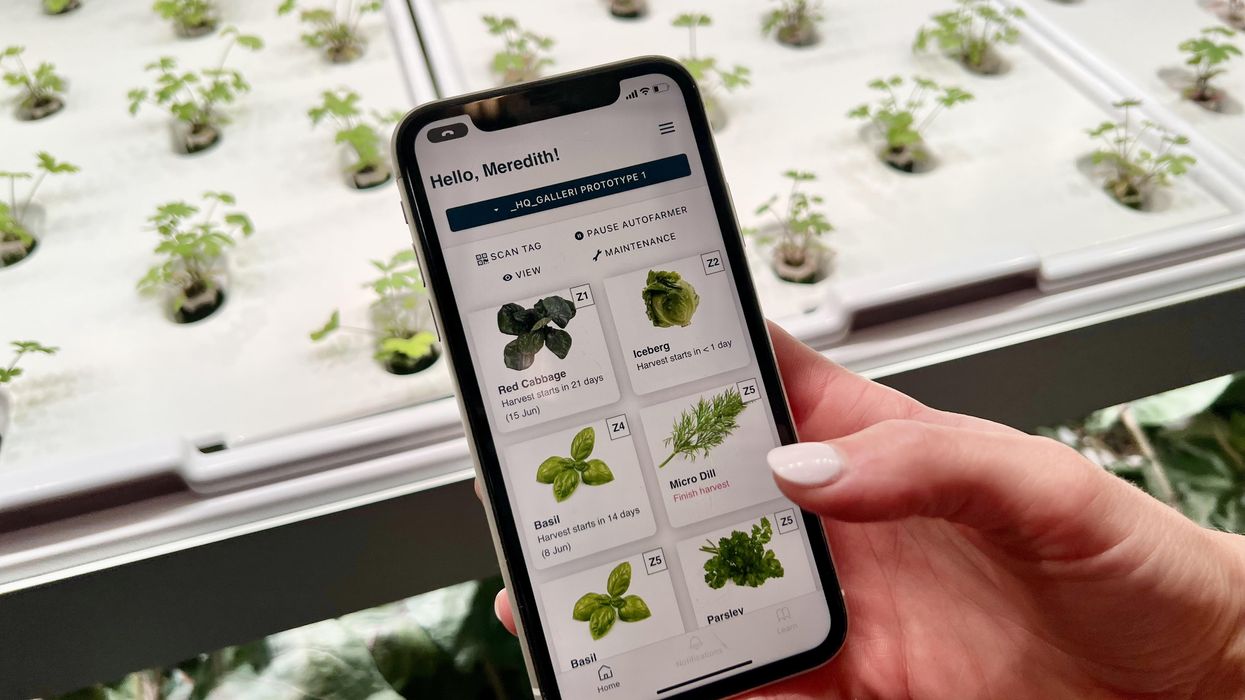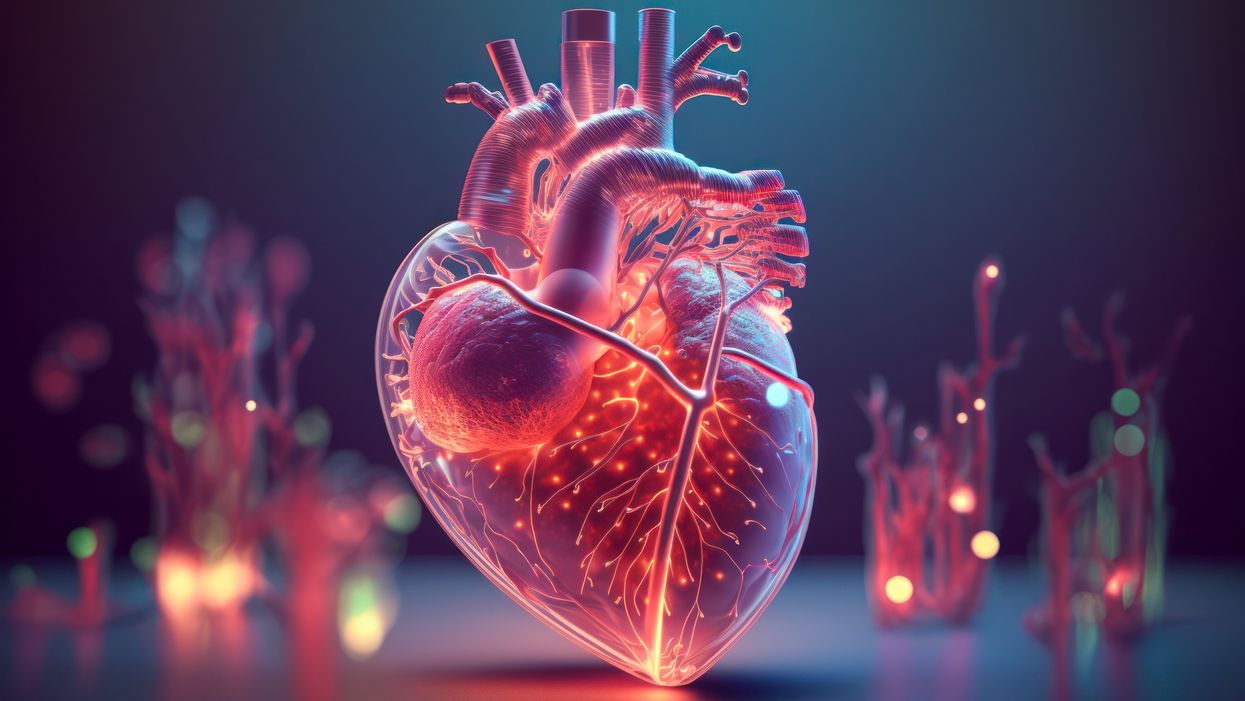The Case for an Outright Ban on Facial Recognition Technology
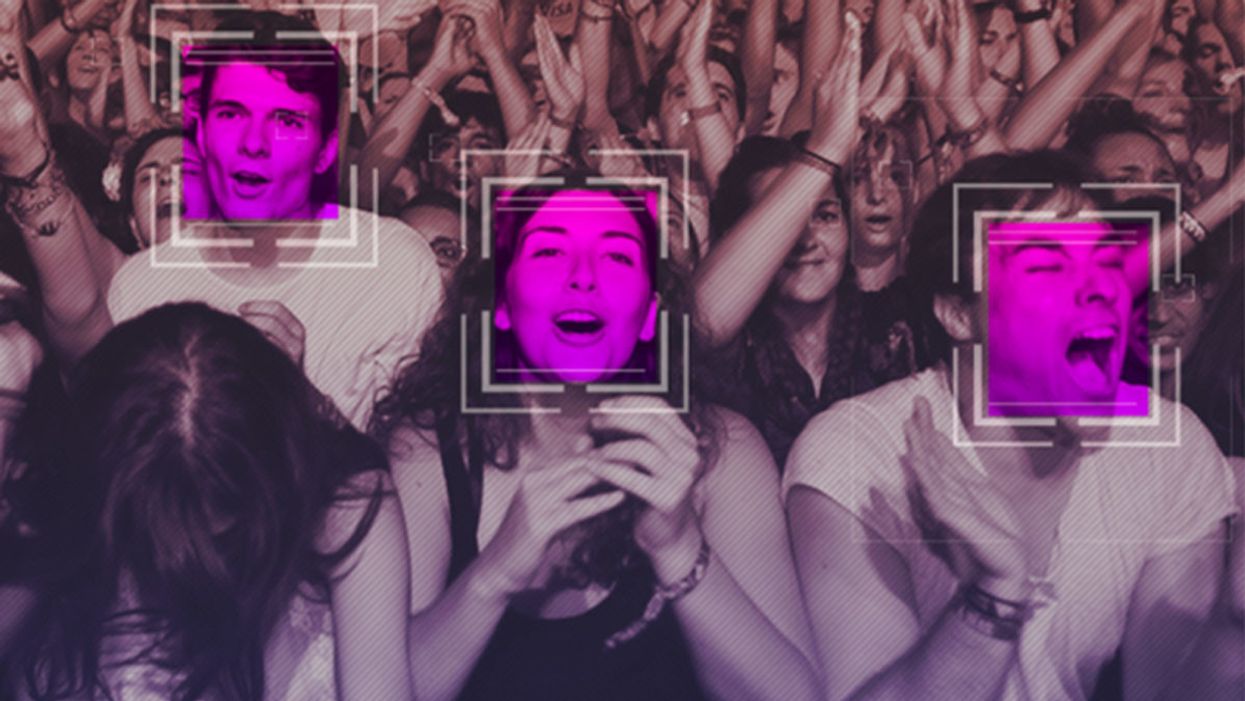
Some experts worry that facial recognition technology is a dangerous enough threat to our basic rights that it should be entirely banned from police and government use.
[Editor's Note: This essay is in response to our current Big Question, which we posed to experts with different perspectives: "Do you think the use of facial recognition technology by the police or government should be banned? If so, why? If not, what limits, if any, should be placed on its use?"]
In a surprise appearance at the tail end of Amazon's much-hyped annual product event last month, CEO Jeff Bezos casually told reporters that his company is writing its own facial recognition legislation.
The use of computer algorithms to analyze massive databases of footage and photographs could render human privacy extinct.
It seems that when you're the wealthiest human alive, there's nothing strange about your company––the largest in the world profiting from the spread of face surveillance technology––writing the rules that govern it.
But if lawmakers and advocates fall into Silicon Valley's trap of "regulating" facial recognition and other forms of invasive biometric surveillance, that's exactly what will happen.
Industry-friendly regulations won't fix the dangers inherent in widespread use of face scanning software, whether it's deployed by governments or for commercial purposes. The use of this technology in public places and for surveillance purposes should be banned outright, and its use by private companies and individuals should be severely restricted. As artificial intelligence expert Luke Stark wrote, it's dangerous enough that it should be outlawed for "almost all practical purposes."
Like biological or nuclear weapons, facial recognition poses such a profound threat to the future of humanity and our basic rights that any potential benefits are far outweighed by the inevitable harms.
We live in cities and towns with an exponentially growing number of always-on cameras, installed in everything from cars to children's toys to Amazon's police-friendly doorbells. The use of computer algorithms to analyze massive databases of footage and photographs could render human privacy extinct. It's a world where nearly everything we do, everywhere we go, everyone we associate with, and everything we buy — or look at and even think of buying — is recorded and can be tracked and analyzed at a mass scale for unimaginably awful purposes.
Biometric tracking enables the automated and pervasive monitoring of an entire population. There's ample evidence that this type of dragnet mass data collection and analysis is not useful for public safety, but it's perfect for oppression and social control.
Law enforcement defenders of facial recognition often state that the technology simply lets them do what they would be doing anyway: compare footage or photos against mug shots, drivers licenses, or other databases, but faster. And they're not wrong. But the speed and automation enabled by artificial intelligence-powered surveillance fundamentally changes the impact of that surveillance on our society. Being able to do something exponentially faster, and using significantly less human and financial resources, alters the nature of that thing. The Fourth Amendment becomes meaningless in a world where private companies record everything we do and provide governments with easy tools to request and analyze footage from a growing, privately owned, panopticon.
Tech giants like Microsoft and Amazon insist that facial recognition will be a lucrative boon for humanity, as long as there are proper safeguards in place. This disingenuous call for regulation is straight out of the same lobbying playbook that telecom companies have used to attack net neutrality and Silicon Valley has used to scuttle meaningful data privacy legislation. Companies are calling for regulation because they want their corporate lawyers and lobbyists to help write the rules of the road, to ensure those rules are friendly to their business models. They're trying to skip the debate about what role, if any, technology this uniquely dangerous should play in a free and open society. They want to rush ahead to the discussion about how we roll it out.
We need spaces that are free from government and societal intrusion in order to advance as a civilization.
Facial recognition is spreading very quickly. But backlash is growing too. Several cities have already banned government entities, including police and schools, from using biometric surveillance. Others have local ordinances in the works, and there's state legislation brewing in Michigan, Massachusetts, Utah, and California. Meanwhile, there is growing bipartisan agreement in U.S. Congress to rein in government use of facial recognition. We've also seen significant backlash to facial recognition growing in the U.K., within the European Parliament, and in Sweden, which recently banned its use in schools following a fine under the General Data Protection Regulation (GDPR).
At least two frontrunners in the 2020 presidential campaign have backed a ban on law enforcement use of facial recognition. Many of the largest music festivals in the world responded to Fight for the Future's campaign and committed to not use facial recognition technology on music fans.
There has been widespread reporting on the fact that existing facial recognition algorithms exhibit systemic racial and gender bias, and are more likely to misidentify people with darker skin, or who are not perceived by a computer to be a white man. Critics are right to highlight this algorithmic bias. Facial recognition is being used by law enforcement in cities like Detroit right now, and the racial bias baked into that software is doing harm. It's exacerbating existing forms of racial profiling and discrimination in everything from public housing to the criminal justice system.
But the companies that make facial recognition assure us this bias is a bug, not a feature, and that they can fix it. And they might be right. Face scanning algorithms for many purposes will improve over time. But facial recognition becoming more accurate doesn't make it less of a threat to human rights. This technology is dangerous when it's broken, but at a mass scale, it's even more dangerous when it works. And it will still disproportionately harm our society's most vulnerable members.
Persistent monitoring and policing of our behavior breeds conformity, benefits tyrants, and enriches elites.
We need spaces that are free from government and societal intrusion in order to advance as a civilization. If technology makes it so that laws can be enforced 100 percent of the time, there is no room to test whether those laws are just. If the U.S. government had ubiquitous facial recognition surveillance 50 years ago when homosexuality was still criminalized, would the LGBTQ rights movement ever have formed? In a world where private spaces don't exist, would people have felt safe enough to leave the closet and gather, build community, and form a movement? Freedom from surveillance is necessary for deviation from social norms as well as to dissent from authority, without which societal progress halts.
Persistent monitoring and policing of our behavior breeds conformity, benefits tyrants, and enriches elites. Drawing a line in the sand around tech-enhanced surveillance is the fundamental fight of this generation. Lining up to get our faces scanned to participate in society doesn't just threaten our privacy, it threatens our humanity, and our ability to be ourselves.
[Editor's Note: Read the opposite perspective here.]
Autonomous, indoor farming gives a boost to crops
Artificial Intelligence is already helping to grow some of the food we eat.
The glass-encased cabinet looks like a display meant to hold reasonably priced watches, or drugstore beauty creams shipped from France. But instead of this stagnant merchandise, each of its five shelves is overgrown with leaves — moss-soft pea sprouts, spikes of Lolla rosa lettuces, pale bok choy, dark kale, purple basil or red-veined sorrel or green wisps of dill. The glass structure isn’t a cabinet, but rather a “micro farm.”
The gadget is on display at the Richmond, Virginia headquarters of Babylon Micro-Farms, a company that aims to make indoor farming in the U.S. more accessible and sustainable. Babylon’s soilless hydroponic growing system, which feeds plants via nutrient-enriched water, allows chefs on cruise ships, cafeterias and elsewhere to provide home-grown produce to patrons, just seconds after it’s harvested. Currently, there are over 200 functioning systems, either sold or leased to customers, and more of them are on the way.
The chef-farmers choose from among 45 types of herb and leafy-greens seeds, plop them into grow trays, and a few weeks later they pick and serve. While success is predicated on at least a small amount of these humans’ care, the systems are autonomously surveilled round-the-clock from Babylon’s base of operations. And artificial intelligence is helping to run the show.
Babylon piloted the use of specialized cameras that take pictures in different spectrums to gather some less-obvious visual data about plants’ wellbeing and alert people if something seems off.
Imagine consistently perfect greens and tomatoes and strawberries, grown hyper-locally, using less water, without chemicals or environmental contaminants. This is the hefty promise of controlled environment agriculture (CEA) — basically, indoor farms that can be hydroponic, aeroponic (plant roots are suspended and fed through misting), or aquaponic (where fish play a role in fertilizing vegetables). But whether they grow 4,160 leafy-green servings per year, like one Babylon farm, or millions of servings, like some of the large, centralized facilities starting to supply supermarkets across the U.S., they seek to minimize failure as much as possible.
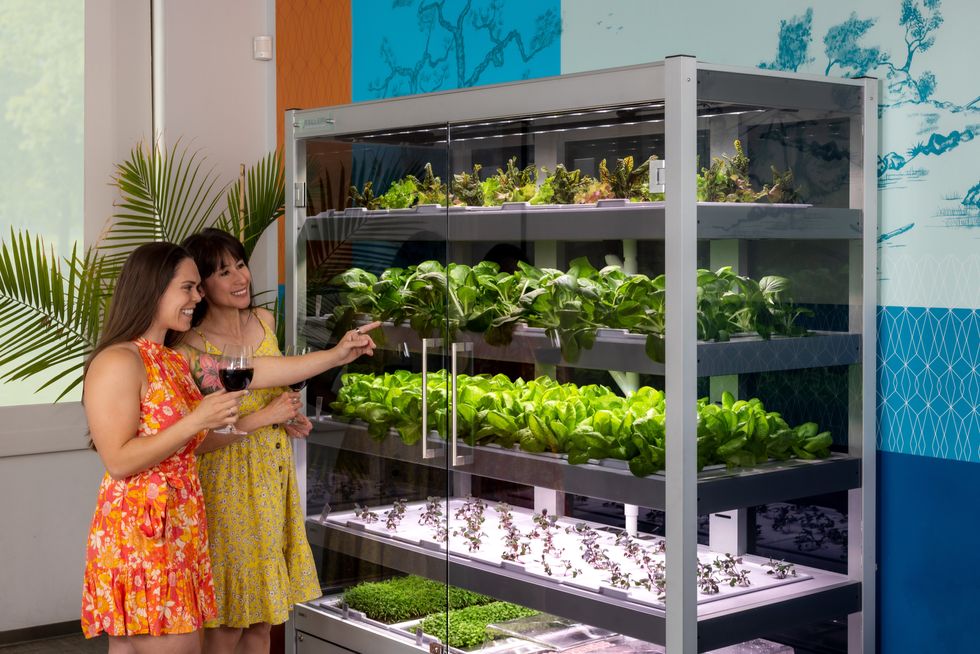
Babylon’s soilless hydroponic growing system
Courtesy Babylon Micro-Farms
Here, AI is starting to play a pivotal role. CEA growers use it to help “make sense of what’s happening” to the plants in their care, says Scott Lowman, vice president of applied research at the Institute for Advanced Learning and Research (IALR) in Virginia, a state that’s investing heavily in CEA companies. And although these companies say they’re not aiming for a future with zero human employees, AI is certainly poised to take a lot of human farming intervention out of the equation — for better and worse.
Most of these companies are compiling their own data sets to identify anything that might block the success of their systems. Babylon had already integrated sensor data into its farms to measure heat and humidity, the nutrient content of water, and the amount of light plants receive. Last year, they got a National Science Foundation grant that allowed them to pilot the use of specialized cameras that take pictures in different spectrums to gather some less-obvious visual data about plants’ wellbeing and alert people if something seems off. “Will this plant be healthy tomorrow? Are there things…that the human eye can't see that the plant starts expressing?” says Amandeep Ratte, the company’s head of data science. “If our system can say, Hey, this plant is unhealthy, we can reach out to [users] preemptively about what they’re doing wrong, or is there a disease at the farm?” Ratte says. The earlier the better, to avoid crop failures.
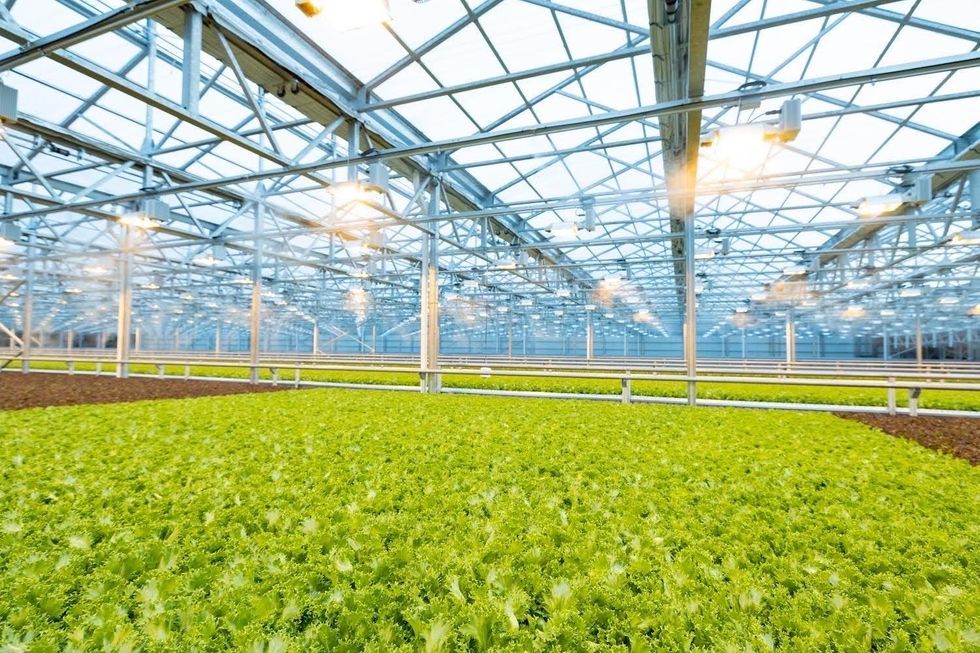
Natural light accounts for 70 percent of Greenswell Growers’ energy use on a sunny day.
Courtesy Greenswell Growers
IALR’s Lowman says that other CEA companies are developing their AI systems to account for the different crops they grow — lettuces come in all shapes and sizes, after all, and each has different growing needs than, for example, tomatoes. The ways they run their operations differs also. Babylon is unusual in its decentralized structure. But centralized growing systems with one main location have variabilities, too. AeroFarms, which recently declared bankruptcy but will continue to run its 140,000-square foot vertical operation in Danville, Virginia, is entirely enclosed and reliant on the intense violet glow of grow lights to produce microgreens.
Different companies have different data needs. What data is essential to AeroFarms isn’t quite the same as for Greenswell Growers located in Goochland County, Virginia. Raising four kinds of lettuce in a 77,000-square-foot automated hydroponic greenhouse, the vagaries of naturally available light, which accounts for 70 percent of Greenswell’s energy use on a sunny day, affect operations. Their tech needs to account for “outside weather impacts,” says president Carl Gupton. “What adjustments do we have to make inside of the greenhouse to offset what's going on outside environmentally, to give that plant optimal conditions? When it's 85 percent humidity outside, the system needs to do X, Y and Z to get the conditions that we want inside.”
AI will help identify diseases, as well as when a plant is thirsty or overly hydrated, when it needs more or less calcium, phosphorous, nitrogen.
Nevertheless, every CEA system has the same core needs — consistent yield of high quality crops to keep up year-round supply to customers. Additionally, “Everybody’s got the same set of problems,” Gupton says. Pests may come into a facility with seeds. A disease called pythium, one of the most common in CEA, can damage plant roots. “Then you have root disease pressures that can also come internally — a change in [growing] substrate can change the way the plant performs,” Gupton says.
AI will help identify diseases, as well as when a plant is thirsty or overly hydrated, when it needs more or less calcium, phosphorous, nitrogen. So, while companies amass their own hyper-specific data sets, Lowman foresees a time within the next decade “when there will be some type of [open-source] database that has the most common types of plant stress identified” that growers will be able to tap into. Such databases will “create a community and move the science forward,” says Lowman.
In fact, IALR is working on assembling images for just such a database now. On so-called “smart tables” inside an Institute lab, a team is growing greens and subjects them to various stressors. Then, they’re administering treatments while taking images of every plant every 15 minutes, says Lowman. Some experiments generate 80,000 images; the challenge lies in analyzing and annotating the vast trove of them, marking each one to reflect outcome—for example increasing the phosphate delivery and the plant’s response to it. Eventually, they’ll be fed into AI systems to help them learn.
For all the enthusiasm surrounding this technology, it’s not without downsides. Training just one AI system can emit over 250,000 pounds of carbon dioxide, according to MIT Technology Review. AI could also be used “to enhance environmental benefit for CEA and optimize [its] energy consumption,” says Rozita Dara, a computer science professor at the University of Guelph in Canada, specializing in AI and data governance, “but we first need to collect data to measure [it].”
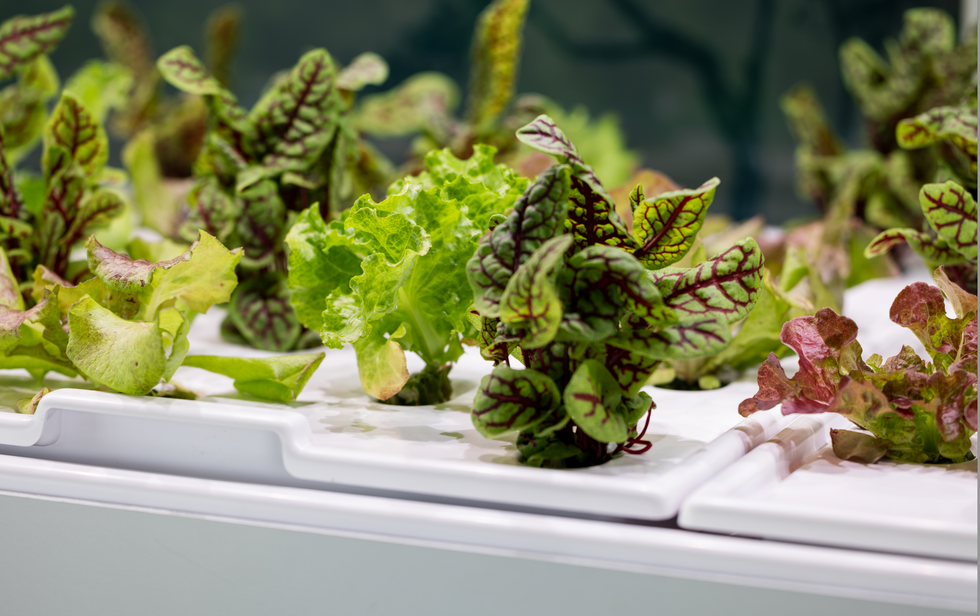
The chef-farmers can choose from 45 types of herb and leafy-greens seeds.
Courtesy Babylon Micro-Farms
Any system connected to the Internet of Things is also vulnerable to hacking; if CEA grows to the point where “there are many of these similar farms, and you're depending on feeding a population based on those, it would be quite scary,” Dara says. And there are privacy concerns, too, in systems where imaging is happening constantly. It’s partly for this reason, says Babylon’s Ratte, that the company’s in-farm cameras all “face down into the trays, so the only thing [visible] is pictures of plants.”
Tweaks to improve AI for CEA are happening all the time. Greenswell made its first harvest in 2022 and now has annual data points they can use to start making more intelligent choices about how to feed, water, and supply light to plants, says Gupton. Ratte says he’s confident Babylon’s system can already “get our customers reliable harvests. But in terms of how far we have to go, it's a different problem,” he says. For example, if AI could detect whether the farm is mostly empty—meaning the farm’s user hasn’t planted a new crop of greens—it can alert Babylon to check “what's going on with engagement with this user?” Ratte says. “Do they need more training? Did the main person responsible for the farm quit?”
Lowman says more automation is coming, offering greater ability for systems to identify problems and mitigate them on the spot. “We still have to develop datasets that are specific, so you can have a very clear control plan, [because] artificial intelligence is only as smart as what we tell it, and in plant science, there's so much variation,” he says. He believes AI’s next level will be “looking at those first early days of plant growth: when the seed germinates, how fast it germinates, what it looks like when it germinates.” Imaging all that and pairing it with AI, “can be a really powerful tool, for sure.”
Scientists make progress with growing organs for transplants
Researchers from the University of Cambridge have laid the foundations for growing synthetic embryos that could develop a beating heart, gut and brain.
Story by Big Think
For over a century, scientists have dreamed of growing human organs sans humans. This technology could put an end to the scarcity of organs for transplants. But that’s just the tip of the iceberg. The capability to grow fully functional organs would revolutionize research. For example, scientists could observe mysterious biological processes, such as how human cells and organs develop a disease and respond (or fail to respond) to medication without involving human subjects.
Recently, a team of researchers from the University of Cambridge has laid the foundations not just for growing functional organs but functional synthetic embryos capable of developing a beating heart, gut, and brain. Their report was published in Nature.
The organoid revolution
In 1981, scientists discovered how to keep stem cells alive. This was a significant breakthrough, as stem cells have notoriously rigorous demands. Nevertheless, stem cells remained a relatively niche research area, mainly because scientists didn’t know how to convince the cells to turn into other cells.
Then, in 1987, scientists embedded isolated stem cells in a gelatinous protein mixture called Matrigel, which simulated the three-dimensional environment of animal tissue. The cells thrived, but they also did something remarkable: they created breast tissue capable of producing milk proteins. This was the first organoid — a clump of cells that behave and function like a real organ. The organoid revolution had begun, and it all started with a boob in Jello.
For the next 20 years, it was rare to find a scientist who identified as an “organoid researcher,” but there were many “stem cell researchers” who wanted to figure out how to turn stem cells into other cells. Eventually, they discovered the signals (called growth factors) that stem cells require to differentiate into other types of cells.
For a human embryo (and its organs) to develop successfully, there needs to be a “dialogue” between these three types of stem cells.
By the end of the 2000s, researchers began combining stem cells, Matrigel, and the newly characterized growth factors to create dozens of organoids, from liver organoids capable of producing the bile salts necessary for digesting fat to brain organoids with components that resemble eyes, the spinal cord, and arguably, the beginnings of sentience.
Synthetic embryos
Organoids possess an intrinsic flaw: they are organ-like. They share some characteristics with real organs, making them powerful tools for research. However, no one has found a way to create an organoid with all the characteristics and functions of a real organ. But Magdalena Żernicka-Goetz, a developmental biologist, might have set the foundation for that discovery.
Żernicka-Goetz hypothesized that organoids fail to develop into fully functional organs because organs develop as a collective. Organoid research often uses embryonic stem cells, which are the cells from which the developing organism is created. However, there are two other types of stem cells in an early embryo: stem cells that become the placenta and those that become the yolk sac (where the embryo grows and gets its nutrients in early development). For a human embryo (and its organs) to develop successfully, there needs to be a “dialogue” between these three types of stem cells. In other words, Żernicka-Goetz suspected the best way to grow a functional organoid was to produce a synthetic embryoid.
As described in the aforementioned Nature paper, Żernicka-Goetz and her team mimicked the embryonic environment by mixing these three types of stem cells from mice. Amazingly, the stem cells self-organized into structures and progressed through the successive developmental stages until they had beating hearts and the foundations of the brain.
“Our mouse embryo model not only develops a brain, but also a beating heart [and] all the components that go on to make up the body,” said Żernicka-Goetz. “It’s just unbelievable that we’ve got this far. This has been the dream of our community for years and major focus of our work for a decade and finally we’ve done it.”
If the methods developed by Żernicka-Goetz’s team are successful with human stem cells, scientists someday could use them to guide the development of synthetic organs for patients awaiting transplants. It also opens the door to studying how embryos develop during pregnancy.
This article originally appeared on Big Think, home of the brightest minds and biggest ideas of all time.

